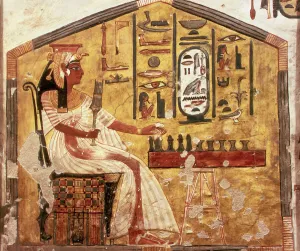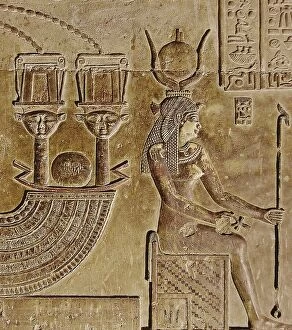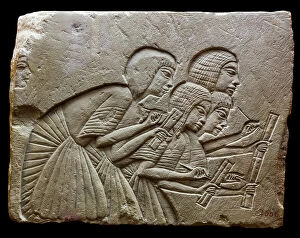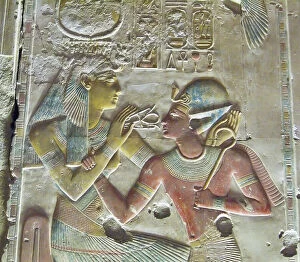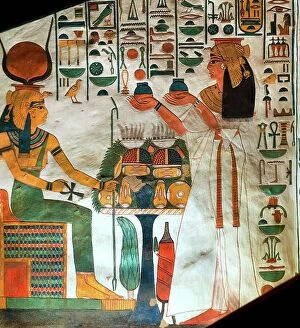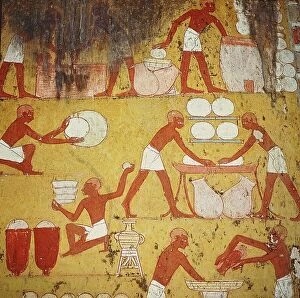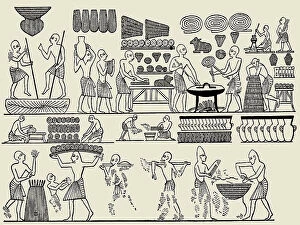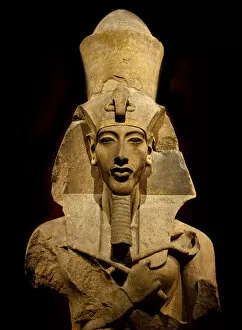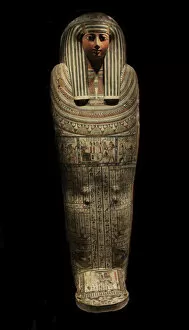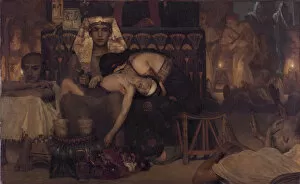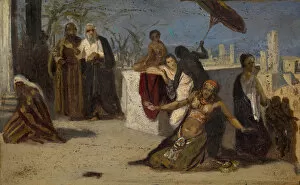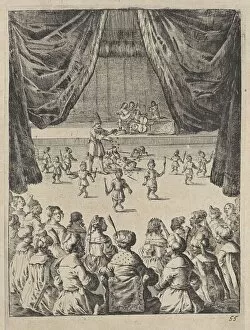Egyptian King Collection
"Unveiling the Majesty: Exploring the Legacy of Egyptian Kings" Step into the ancient world as Queen Nefertari, beloved wife of Pharaoh Ramesses II
All Professionally Made to Order for Quick Shipping
"Unveiling the Majesty: Exploring the Legacy of Egyptian Kings" Step into the ancient world as Queen Nefertari, beloved wife of Pharaoh Ramesses II, engages in a captivating game of Senet. Witness her strategic moves and immerse yourself in the tomb that preserves their eternal bond. Behold a mesmerizing bracelet adorned with the Eye of Horus, an emblem symbolizing protection and power. Crafted by skilled hands in 943-922 BC, this artifact transports us to an era where artistry thrived. Gaze upon the statue of Akhenaten, a revolutionary pharaoh who challenged traditional beliefs during his reign. His unique depiction showcases his devotion to Aten, the sun god worshipped above all others. Marvel at the celestial beauty of The Eye of Horus adorning Hathor Temple's ceiling in Dendera. This sacred symbol represents healing and restoration, offering solace to those seeking divine intervention. Witness an Egyptian king immersed in worship within a grand temple through an intricate engraving. Feel their reverence for gods that guided every aspect of their lives - from daily rituals to monumental ceremonies. Unlock secrets hidden within Tutankhamun's tomb through a cartouche-shaped box dating back to 14th century BC. Marvel at its craftsmanship while pondering its purpose as it once safeguarded precious treasures. Transport yourself to ancient melodies resonating from "The Harpists Stele. " Djedkhonsuefankh, High Priest of Amun, serenades Ra-Horakhty with enchanting music and heartfelt lyrics - a testament to Egypt's rich cultural heritage. Observe scribes meticulously transcribing knowledge onto papyrus scrolls on relief walls found at Saqqara's Mastaba belonging to Akhethotep. Their meticulous work ensured preservation and dissemination of wisdom throughout generations. Reflect on tragedy as we witness Death taking Pharaohs' firstborn sons in a poignant depiction from 1858.

